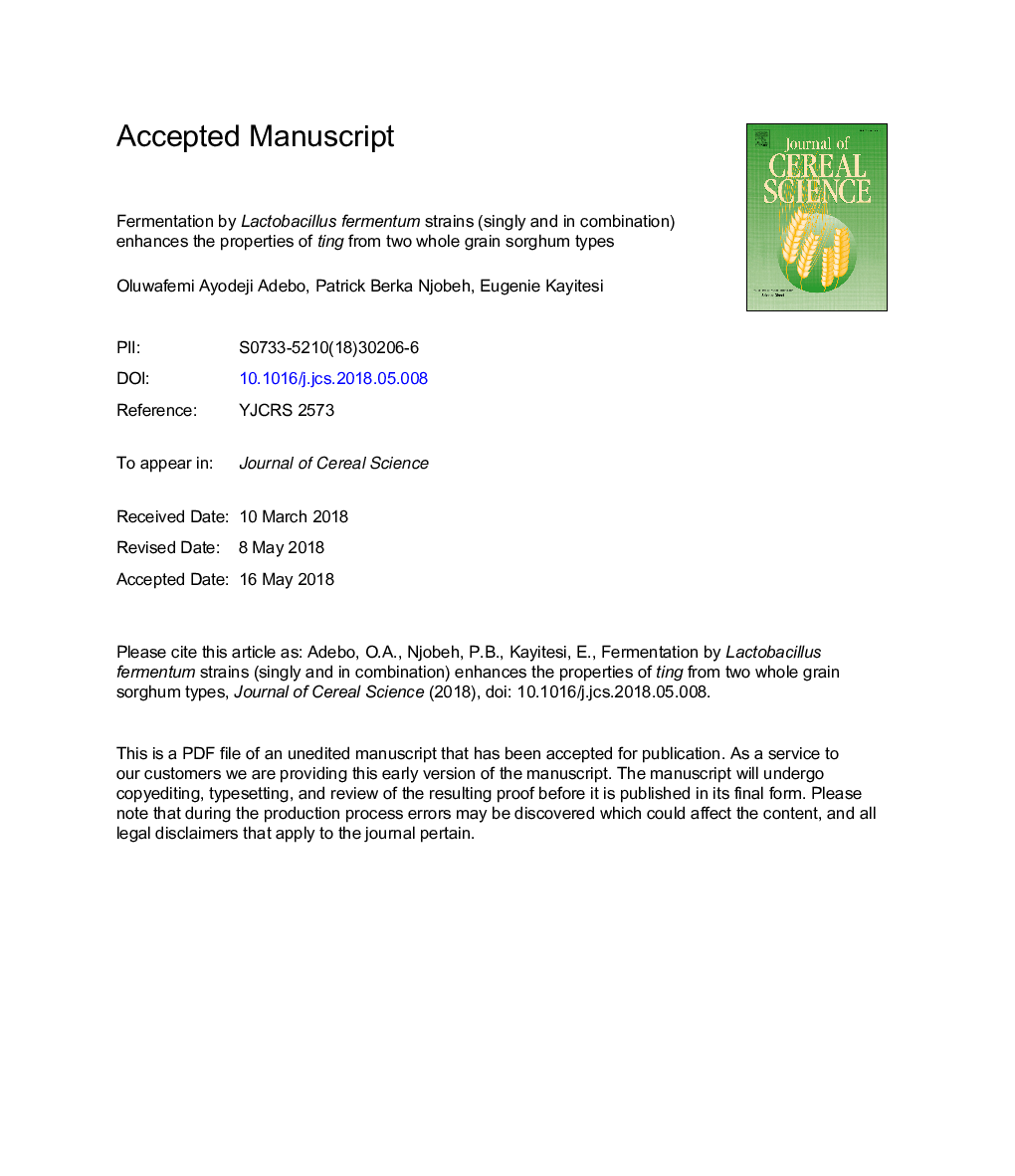| Article ID | Journal | Published Year | Pages | File Type |
|---|---|---|---|---|
| 8881260 | Journal of Cereal Science | 2018 | 25 Pages |
Abstract
Challenges with spontaneous fermentation of whole grain (WG) sorghum into ting, necessitates the use of starter cultures that could ensure consistency, better acidification and improved quality. This study therefore investigated the effect of single and co-starter culture additions [L. fermentum (FUA 3165 and 3321)] on ting properties (physicochemical, bioactive components and antioxidant activity) obtained from whole grain (WG) sorghum types [high tannin (HT) and low tannin (LT)]. WG-ting samples were obtained from different sorghum types after fermentation at 34â¯Â°C for 24â¯h and 28â¯Â°C for 72â¯h. Both single starter cultures yielded better results with significantly lower pH (4.94-5.07), tannin content (0.41-2.83â¯mg CE/g), total phenolic content (8.11-32.13â¯mg GAE/g) and flavonoid content (7.53-26.38â¯mg CE/g), with higher titratable acidity (1.98-2.67â¯g/kg) and antioxidant activity (4.82-7.81â¯Î¼Mâ¯TE/g). Liquid chromatography-tandem mass spectrometry (LC-MS/MS) quantification of some phenolic compounds showed that WG-ting samples from the HT-sorghum, fermented with L. fermentum FUA 3321 had significantly higher bioactive compounds (catechin, gallic acid and quercetin). Fourier transform infrared (FTIR) spectroscopy revealed the presence of diverse functional groups, while principal component analysis (PCA) of the FTIR data further differentiated the ting samples into group clusters. Sorghum type and fermentation with L. fermentum significantly influenced fermentation and subsequently the WG-ting composition. Fermenting HT sorghum type with L. fermentum FUA 3321 yielded WG-ting higher pH, titratable acidity, bioactive components and improved phenolic composition.
Keywords
Related Topics
Life Sciences
Agricultural and Biological Sciences
Agronomy and Crop Science
Authors
Oluwafemi Ayodeji Adebo, Patrick Berka Njobeh, Eugenie Kayitesi,
